
© Laurent Liotardo. (Click image for larger version)
English National Ballet
Lest We Forget: No Man’s Land, Second Breath, Dust
★★★★★
London, Sadler’s Wells
20 September 2018
www.ballet.org.uk
www.sadlerswells.com
Lest We Forget will forever be regarded as a pivotal event in the life of English National Ballet. The premiere – a first-ever performance by ENB at the Barbican, in April 2014 – was the inaugural programme of newly-commissioned work by first-time artistic director, Tamara Rojo. In her restaging of Anna-Marie Holmes’ Le Corsaire, Rojo had already accentuated the company’s classical credentials before moving on to the business of contemporising the art form.
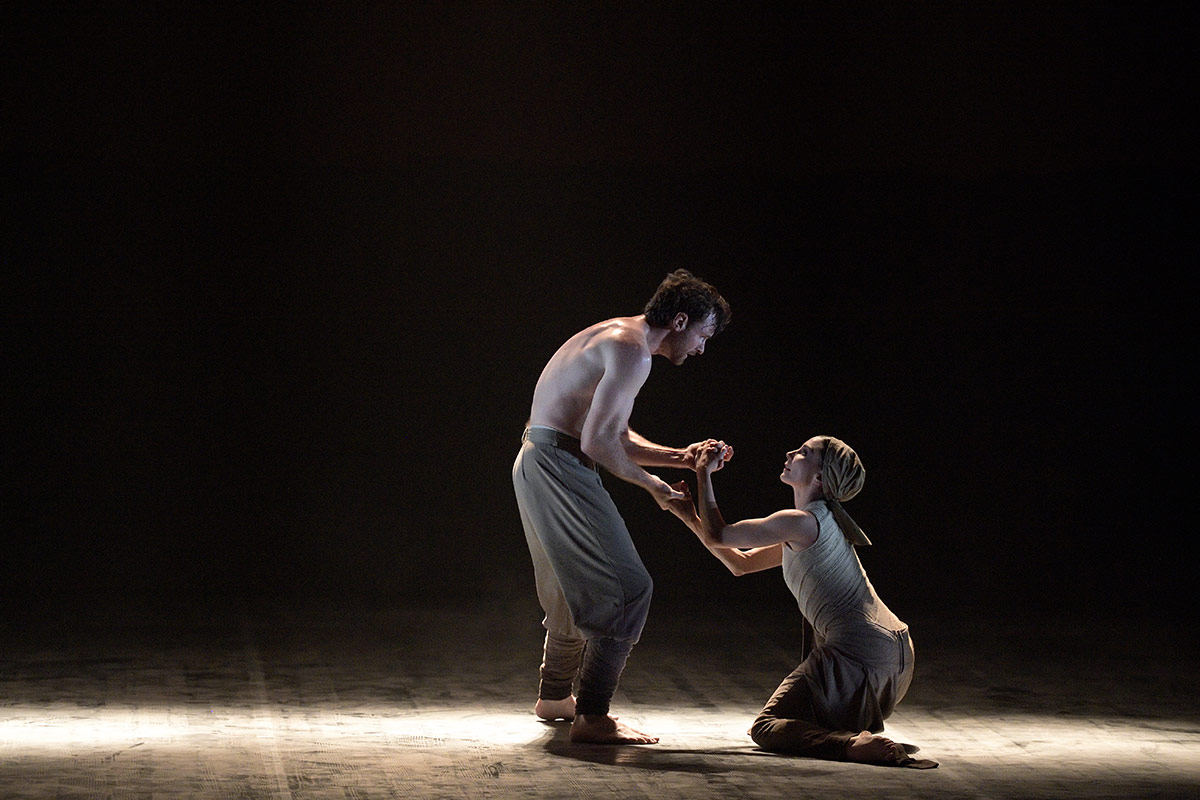
© Laurent Liotardo. (Click image for larger version)
The programme commemorated the centenary of the outbreak of the Great War and, as a statement of intent it had a powerful impact that has continued to reverberate throughout succeeding years. Celebrating the end of that horrific conflict presented a timely opportunity for revival; and, also, to see if the programme still stands up to critical scrutiny and popular appeal; or, if we were all in collective thrall to the seductive puffery of a new dawn.
The original programme had a self-inflicted drawback insofar as the revival of George Williamson’s The Firebird – albeit a work with considerable merit on its own account – was not suited to the thematic purpose; if not stuck in no man’s land, then certainly the “odd man out”. Sensibly, in directing this revival, Rojo has amputated that sore thumb.
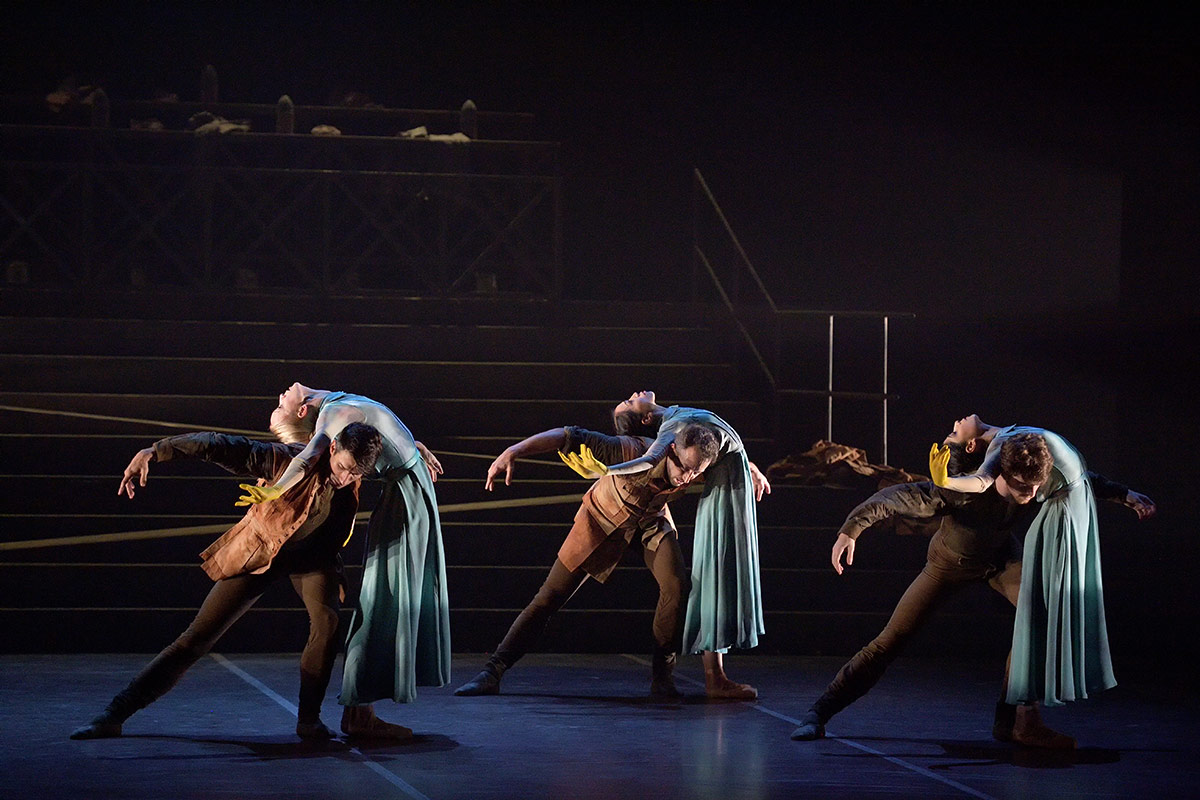
© Laurent Liotardo. (Click image for larger version)
This idiosyncrasy removed, the trio of remaining works gel even more powerfully than in that initial season. I cannot recall being so moved at a dance performance for a very long time, if ever. There are considerable risks in a programme with such inherent sentimentality, comprising pieces that each essentially end with a highly emotional pas de deux. However, it comes without any semblance of déjà vu since these are three duets (four if one includes an earlier pas de deux in the opening work, No Man’s Land) that are engrossing because of their distinctive originality: that, and the expressive excellence in their performance.
This brings me back to Rojo’s statement of intent. It isn’t about contemporary ballet, whatever that might mean. It is about empowering dancers to think; not to wear a mask of character, but to analyse every movement such that they embody the purpose, mood or theme, as themselves. Such a release is counter-intuitive since classical dancers normally perform codified steps and execute technique by rote; and it seems that some dancers may not want to articulate such newfound freedoms.
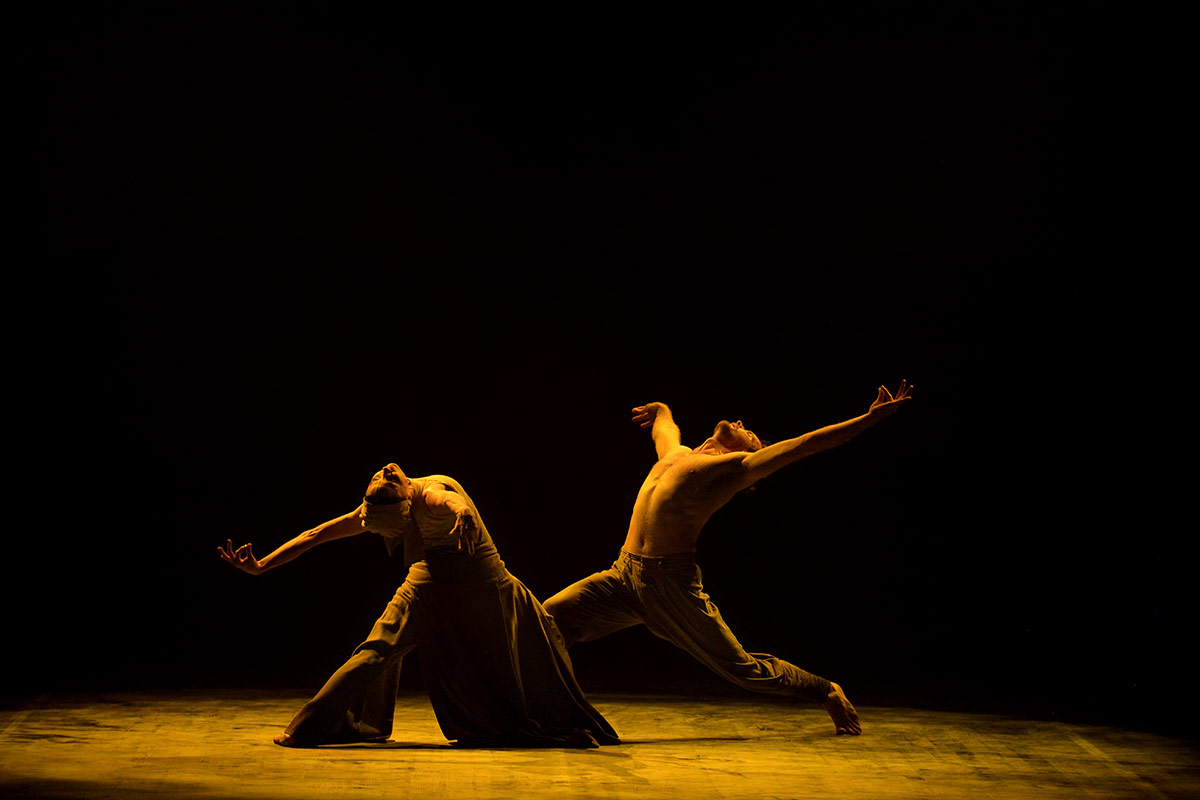
© Laurent Liotardo. (Click image for larger version)
For others, however, it has signalled a career renewal of significance. None more so than James Streeter whose performance as the unknown warrior in Akram Khan’s Dust was sensational: fighting gravitational pull and the loss of muscular discipline by exercising intense muscle control. Khan made the work on himself and there can be no finer accolade than to acknowledge that Streeter is, at least, the creator’s equal. Similarly, Fabian Reimair brings strength and gravitas – dancing with an ethereal Erina Takahashi – to the middle duet in Liam Scarlett’s No Man’s Land. This was a mouth-watering hors d’oeuvre for each of the three concluding duets to come.

© Laurent Liotardo. (Click image for larger version)
Ballet might claim Alina Cojocaru and Tamara Rojo but their artistry goes well beyond ballet. True, both are sublime dancers but they also possess minds engaged in ceaseless enquiry. As was also the case with another such artist, Sylvie Guillem, they continue to grow as performers, because of – not despite – the passing years; absolute absorption in their work brings a richness that only a precious few can command. Cojocaru danced the final duet in both No Man’s Land, partnering another intellectual dancer, Isaac Hernandez; and in the torrent of luscious, sweeping partnered movement that ends Russell Maliphant’s Second Breath, dancing with Junor Souza, yet another long-standing company member giving an “eye-opening” account.
Rojo is incognito within the corps of twelve women for the whole middle section of Dust before demanding attention by standing still in preparation for her poignant, soul-stirring duet with Streeter; made all the more raw by the scratchy sounds of Sergeant Edward Dwyer’s voice in a 1916 recording of the repeated words “We’re here because, we’re here because”. And, lest we forget, Dwyer (the recipient of the Victoria Cross, the ultimate award for battlefield gallantry) was killed – aged, just twenty – in the same year as that recording.

© Laurent Liotardo. (Click image for larger version)
It occurred to me recently that dust has been a recurring theme in Khan’s work, often as a metaphor for mortality. From releasing small puffs of it by plucking an invisible string in Fix (way back in 2000), through clouds of dust floating from the dancers’ costumes in Vertical Road, and the same effect occasioned – just the once – by opening the fists of 71 dancers in the Olympic Stadium for Abide with Me. This leit motif throughout Khan’s choreographic career has found its apogee in the symbolism – and naming – of Dust.
The programme is continually enhanced through the interaction of all the creative contributions, providing an unbroken golden thread, from Jon Bausor’s inventive set design for No Man’s Land, simultaneously combining imagery of the Western and the Home Fronts; and through diverse and impressive lighting and costume designs for each production. Michael Hulls’ lighting for Second Breath has such substance there is no need for anything else in stage design to accentuate the psychological influence of looped words from Dylan Thomas’ Do not go gentle into that good night.

© ASH. (Click image for larger version)
For the sentimental among us, I strongly recommend tissues and a strong drink. And, even those with the hardest of hearts must appreciate the expressionism and artistry achieved in both creating and performing three such superb works. If anyone comes to write a history of British ballet in many decades to come, then this programme will surely merit a chapter all of its own.













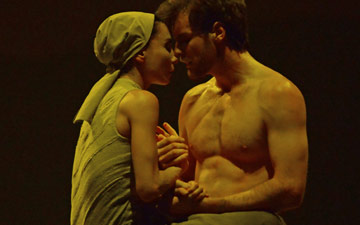
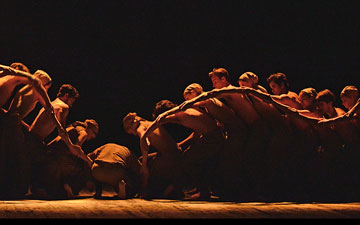

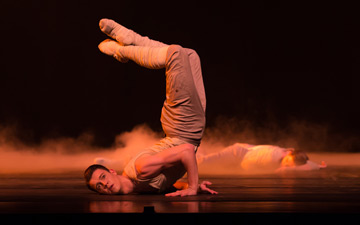
You must be logged in to post a comment.